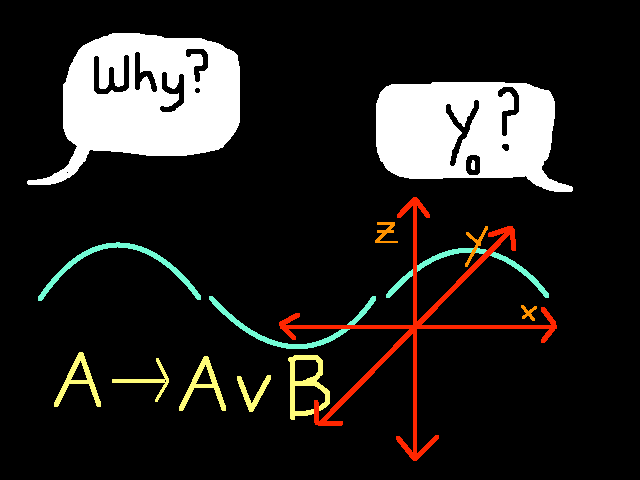 |
| The Montagues and Capulets. The foxes and the hedgehogs. The peanut butter and jelly. |
Physics and philosophy have always been at odds with one another. But, when they collide, it’s like a thought experiment of particles tied to railroad tracks with the string theory leading the train.
Still, one might say physics and philosophy form a möbius strip of knowledge in which one begins where the other ends, but both fields share the same side of the coin. No matter who you ask, it’s almost impossible for a physicist not to wonder about philosophical questions such as our notions of confirmation and theory, and it’s easy to find philosophers arguing about the most basic forms of substance and material that make us who we are. If we don’t pay attention to them, then, over time, those unattended thoughts and questions grow into bigger and more serious problems. Physicists might have knowledge of fundamental particles, but lack knowledge of its metaphysical meaning. Philosophers might theorize forms of material nature without understanding of multiverses. And, through fiery debates and bad communication, the intersections of physics and philosophy become messy. That’s when we need to come together.
When physicists and philosophers convened in Munich earlier this month at a three-day workshop to talk about a new way forward for science, it’s a good sign we’re moving in the right direction. By re-evaluating ideas of truth, validity, empirical, and science itself, the grumpy old men (and women) Seeing the two disparate areas of research working together on the same problems can hopefully set a framework for a new philosophy of physics (and, altogether, a philosophy of science) that can make things better in the 21st century. The workshop, while filled with much frustration of individual understanding and value in certain areas of research (such as string theory), showed how adamant scientists were about their research. In order for them to decide the truth of their own theories, these moments of reflection are necessary to “put your work in the bigger picture.”
But the picture only goes so far. The theories physics lends us will always stay within the realm of physics, and the methods of the Munich conference don’t help too much. For example, the use of “falsifiability” as a way of defining science (i.e., scientific theories that are those that are falsifiable) has been shown to be a poor criteria for distinguishing between science and non-science by philosopher Massimo Pigliucci. It’s better for us to stick to provability using empirical results as a way of confirming science and leaving non-empirical methods to non-science.
What the workshop might have come down to was a way to decide who will get funding. And, of course, string theorists were forced to convince the world that their work was confirmable. While string theorists should definitely be able to pursue their work for the sake of that work, confirming their non-empirical theories as true using Bayesian tests (which are empirical) just won’t do us any good in the long run. We’ve been running into problems because we haven’t paid attention to the distinction between empirical and non-empirical results. And, if we try to change our notions of “empirical” to suit our standards (or use empirical methods like Bayesian tests to confirm our theories), then we’ll keep running into the same problems of putting everything together.
What this means is we should stop holding onto outdated models of “confirming” what we study in theoretical physics and stick to our standard distinctions between science and non-science. If we can’t find any ways certain theories can be confirmed, then it doesn’t mean we should stop working on them. We might be able to promote the research of certain theories for their own sake (or even for the sake of aesthetics), even if those theories are either wrong or non-confirmable.
More discourse between physicists and philosophers should put us in the right direction. We need more honesty and openness about the limits of what we know. Let’s not fool ourselves.
Leave a comment